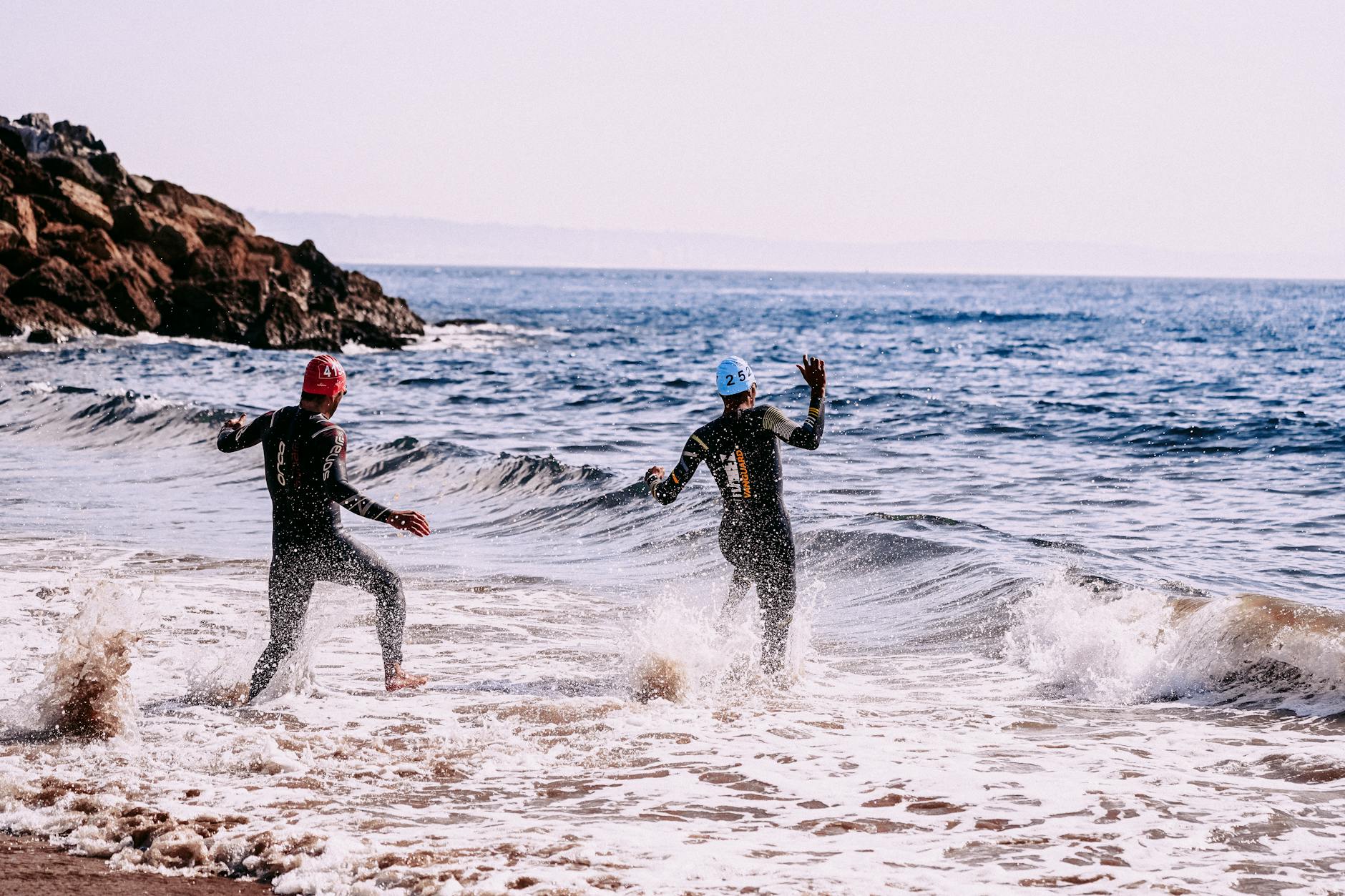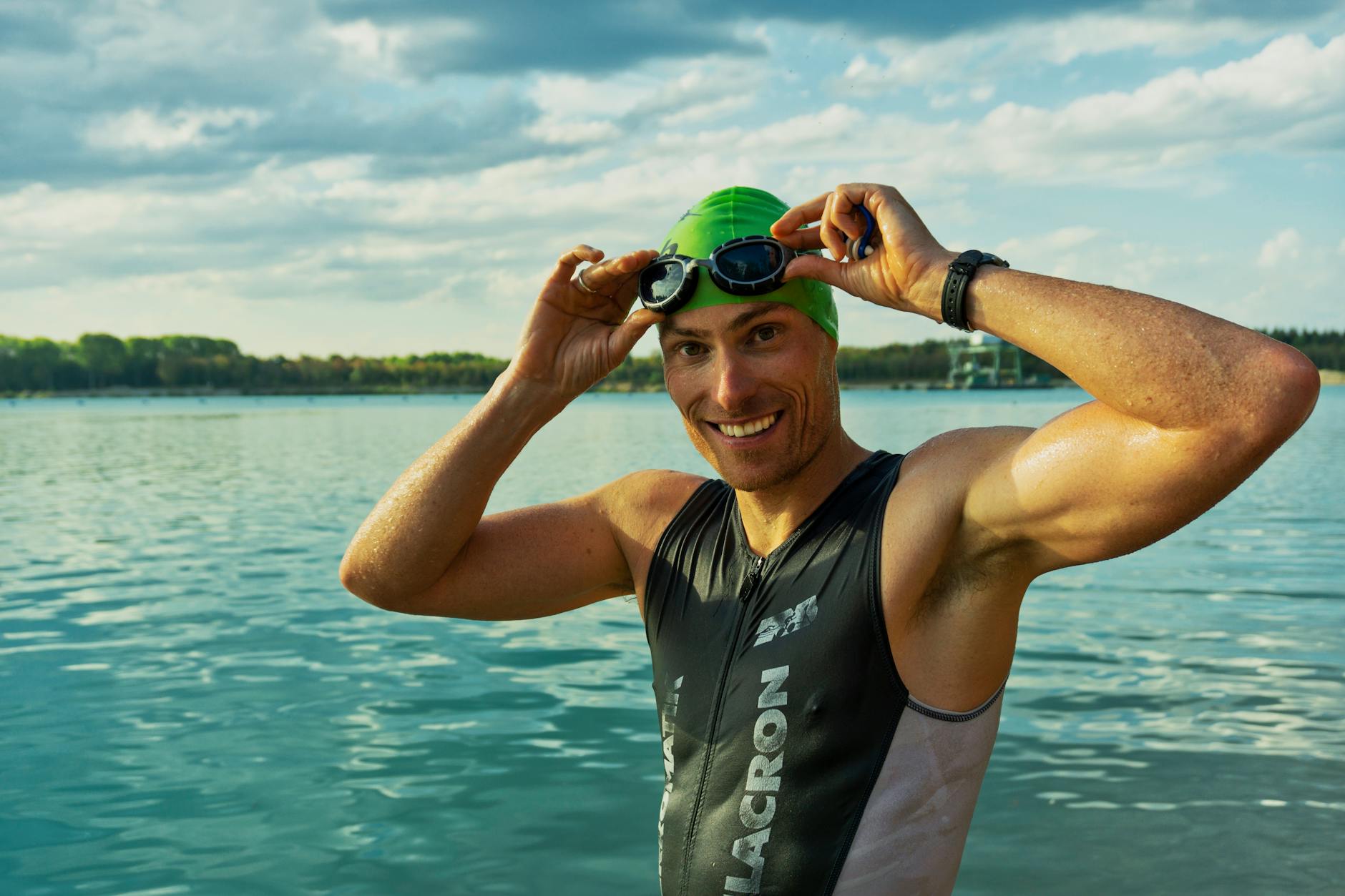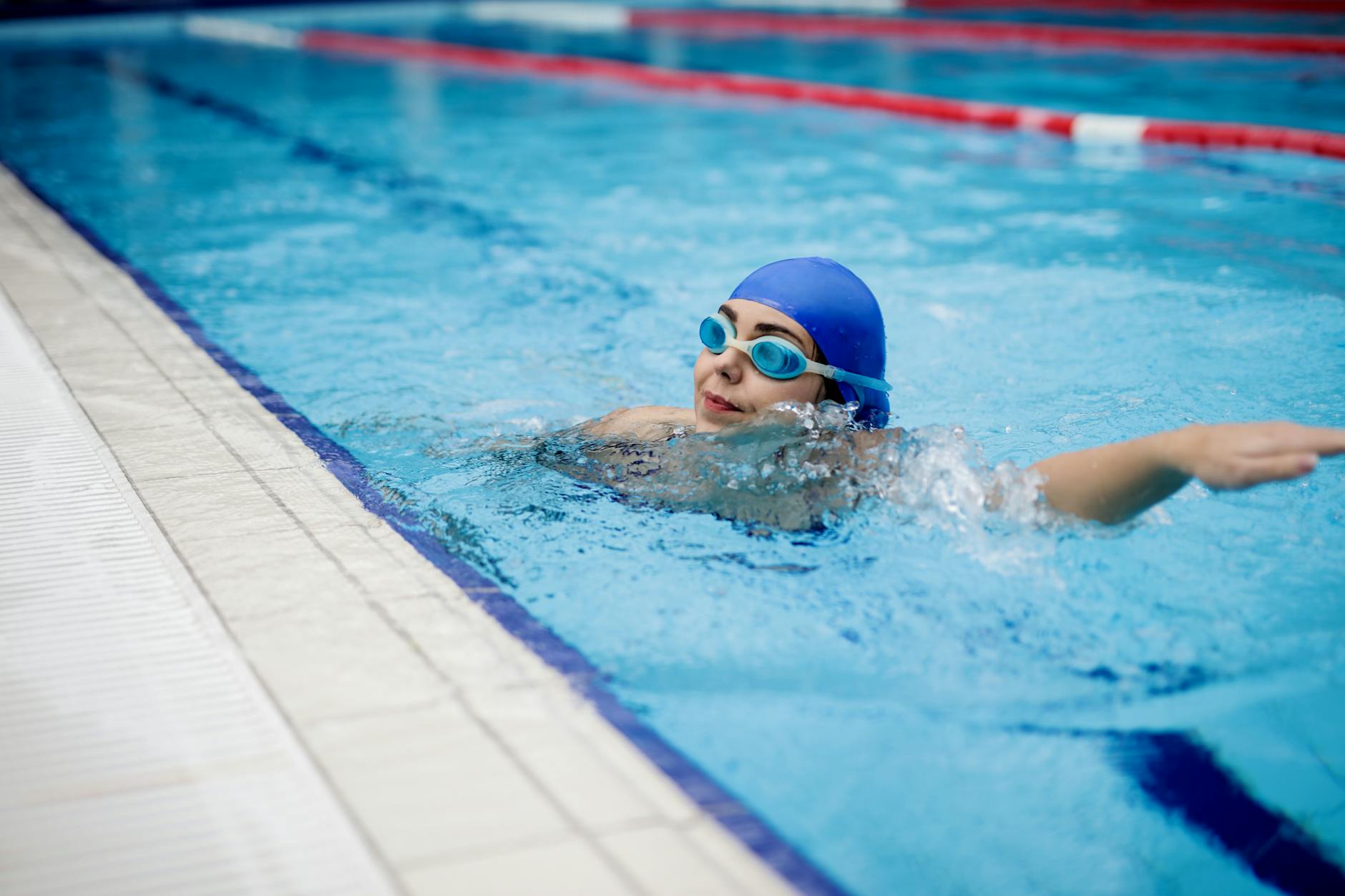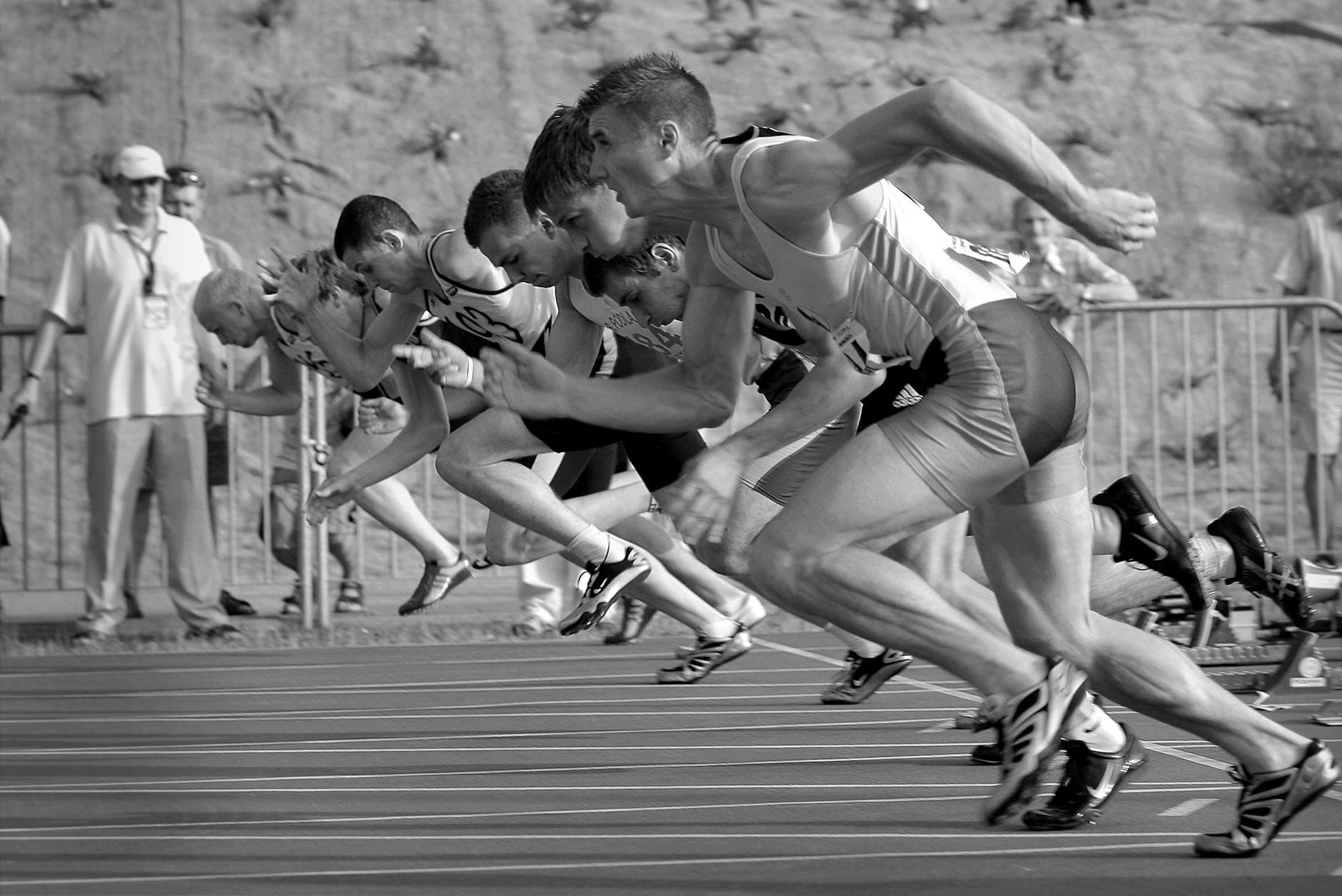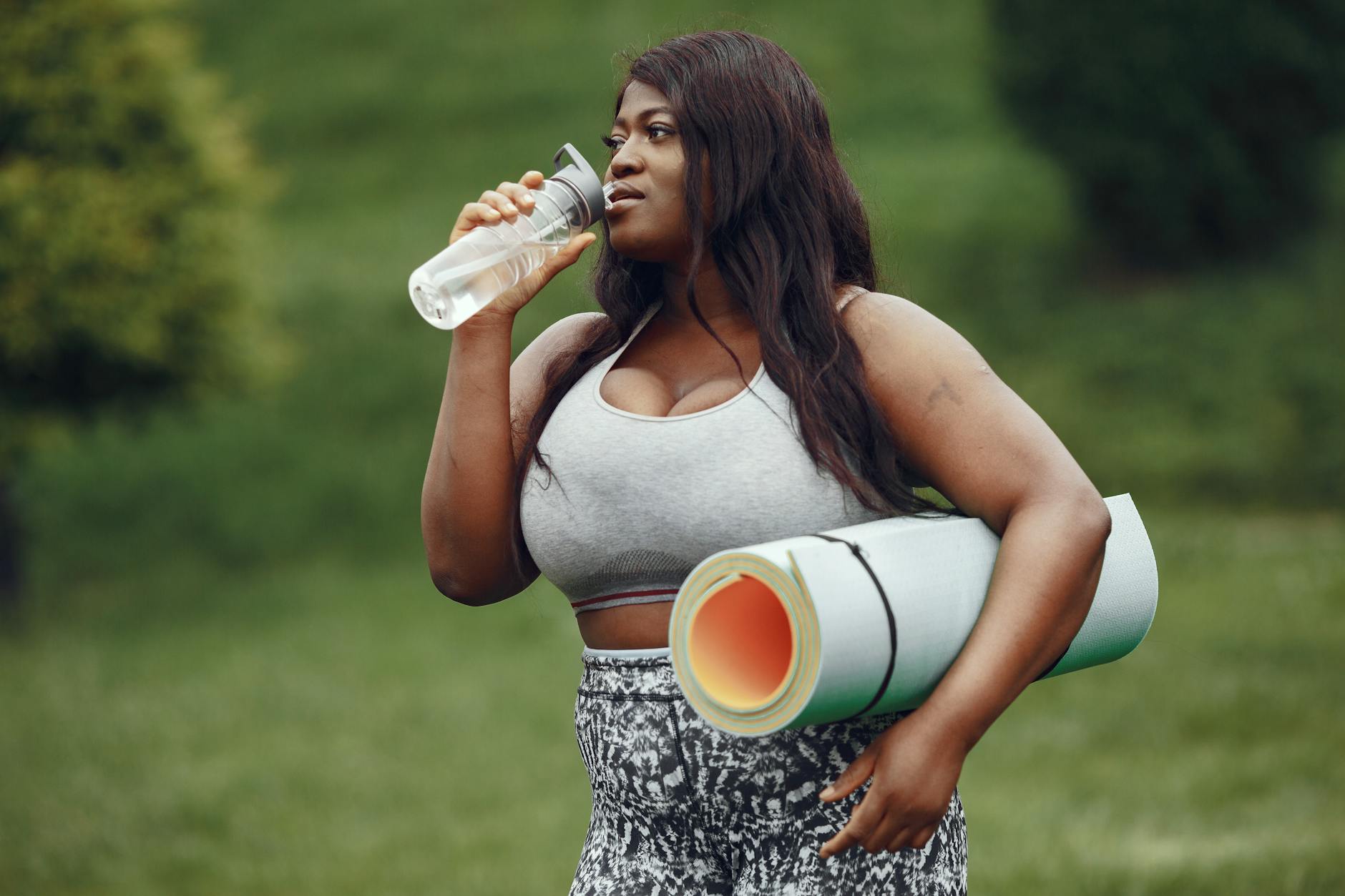How Should A Beginner Start A Triathlon?
I never imagined in a million years that I would be standing on the shore of lake, complete with wetsuit among hundreds of other nervous athletes. You never would have known that, yet here I was going to start my first triathlon. This surrounding path forged though hardship and instilled doubts that could be overcome with unwavering perseverance. But there was one thought that kept popping up in the back of my mind – “How does a triathlon newbie even begin?” 🏊♂️🚴♀️🏃♂️
Which is likely why you’re reading this. The concept of melding 3 extreme sports into the same event may be enough to make people tremble, but it seems immeasurably intimidating. Which is not only possible, I promise you on my life that it can be the best things for your personal development and transformiation. CIick Here to learn more about Training:Triathlon I From the foundation to proficiency in each discipline, from nutrition for training and race day preparation; TfB is here giving you a guiding hand throughout your triathlon journey.
Here I am writing about my personal experiences and insights on kicking it into the world of triathlons. We will range from setting up a training plan to mastering you transitions. Novice or seasoned competitor looking to mix it up, here are some tips that will help you across the finish line with your head held high. Keep reading since diving () into the post. and want to learn how you can make that dream of becoming a triathlete true
Understand the Triathlon Basics
As a seasoned triathlete, I can tell you that understanding the basics is crucial for any beginner. Let me break it down for you.
A. What is a triathlon?
A triathlon is an endurance event that combines swimming, cycling, and running in one race. I love how it challenges both physical and mental strength. It’s not just about being good at one sport; it’s about mastering three and transitioning between them seamlessly.
How Should A Beginner Start A Triathlon?
B. Different triathlon distances
There are several triathlon distances, each offering a unique challenge:
- Sprint: My go-to for beginners
- Olympic: A step up in difficulty
- Half Ironman (70.3): For those seeking a real test
- Full Ironman: The ultimate triathlon challenge
| Distance | Swim | Bike | Run |
|---|---|---|---|
| Sprint | 750m | 20km | 5km |
| Olympic | 1.5km | 40km | 10km |
| Half Ironman | 1.9km | 90km | 21.1km |
| Full Ironman | 3.8km | 180km | 42.2km |
C. Essential gear for beginners
When I started, I focused on these key items:
- Swimwear and goggles
- Road bike or triathlon bike
- Running shoes
- Tri suit or comfortable workout clothes
- Helmet (safety first!)
D. Setting realistic expectations
I always tell beginners: start small and build up. Your first goal should be to finish, not to win. Remember, every triathlete was once a beginner. With consistent training and the right mindset, you’ll surprise yourself with what you can achieve.
Now that we’ve covered the basics, let’s dive into developing a solid training plan to kickstart your triathlon journey.
How Should A Beginner Start A Triathlon?
Develop a Training Plan
Now that we’ve covered the basics, let’s dive into creating a solid training plan. As someone who’s been through this journey, I can’t stress enough how crucial a well-structured plan is for success.
A. Assess your current fitness level
Before jumping in, I always recommend taking stock of where you’re at. Here’s a simple self-assessment table I use:
| Activity | Current Level | Goal |
|---|---|---|
| Swimming | 200m non-stop | 750m race pace |
| Cycling | 10km comfort | 20km race pace |
| Running | 2km jog | 5km race pace |
B. Create a balanced schedule
I’ve found that balance is key. Here’s my weekly breakdown:
- 2-3 swim sessions
- 2-3 bike rides
- 2-3 runs
- 1-2 strength training sessions
C. Gradually increase intensity and duration
I always remind myself: slow and steady wins the race. I increase my workout duration by about 10% each week.
D. Incorporate rest and recovery days
Rest is just as important as training. I make sure to have at least one full rest day per week.
E. Find a training buddy or group
Training with others has been a game-changer for me. It keeps me accountable and makes the journey more enjoyable.
Remember, consistency is key. Stick to your plan, but don’t be afraid to adjust as needed. Next, we’ll explore how to master swimming techniques, a crucial part of your triathlon journey.
How Should A Beginner Start A Triathlon?
Master Swimming Techniques
Swimming is often the most challenging part of a triathlon for beginners. I’ve found that mastering the right techniques can make a world of difference. Let’s dive into the key aspects of triathlon swimming.
Learn proper freestyle form
I can’t stress enough how crucial proper freestyle form is. Here’s a breakdown of the key elements:
- Body position: Keep your body horizontal and streamlined
- Arm stroke: Use a high elbow catch and pull
- Kick: Maintain a steady, relaxed flutter kick
- Breathing: Practice bilateral breathing every 3 strokes
Practice open water swimming
Once I felt comfortable in the pool, I transitioned to open water. Here’s what I learned:
- Start in calm waters
- Practice sighting techniques
- Get used to swimming without lane lines
- Learn to navigate currents and waves
Improve your endurance
Building swim endurance is crucial. I found this training plan effective:
| Week | Session 1 | Session 2 | Session 3 |
|---|---|---|---|
| 1-2 | 10x100m | 5x200m | 1000m continuous |
| 3-4 | 15x100m | 8x200m | 1500m continuous |
| 5-6 | 20x100m | 10x200m | 2000m continuous |
Overcome common swimming fears
Many triathletes, including myself, face fears in open water. Here’s how I overcame them:
- Practice in shallow water first
- Use a swim buoy for added security
- Swim with a buddy or group
- Gradually increase distance from shore
Now that we’ve covered swimming techniques, let’s move on to building your cycling skills, another crucial component of triathlon success.
How Should A Beginner Start A Triathlon?
Build Cycling Skills
Now that we’ve covered swimming techniques, let’s dive into building your cycling skills. As a triathlete, I’ve learned that mastering the bike leg can make or break your race performance.
A. Choose the right bike
Selecting the perfect bike is crucial for your triathlon success. Here’s a quick comparison of different bike types:
| Bike Type | Pros | Cons |
|---|---|---|
| Road Bike | Versatile, lightweight | Less aerodynamic |
| Triathlon Bike | Aerodynamic, faster | More expensive, less comfortable |
| Hybrid Bike | Comfortable, affordable | Slower, heavier |
I recommend starting with a road bike as a beginner. It’s versatile and will serve you well in training and racing.
B. Perfect your cycling posture
Proper posture is key to efficient cycling. I always focus on:
- Keeping my back straight but relaxed
- Maintaining a slight bend in my elbows
- Ensuring my knees are aligned with my feet when pedaling
C. Develop efficient pedaling technique
To maximize power and minimize fatigue, I’ve honed my pedaling technique:
- Push down on the pedal
- Pull back at the bottom of the stroke
- Lift up on the backside
- Push forward at the top
D. Practice gear shifting and hill climbing
Mastering gear shifting is essential, especially for hill climbing. I practice on various terrains to improve my skills and endurance. Remember, maintaining a consistent cadence is crucial for efficient cycling.
Next, we’ll explore how to enhance your running performance, completing the trio of triathlon disciplines.
How Should A Beginner Start A Triathlon?
Enhance Running Performance
Now that we’ve covered cycling skills, let’s focus on improving your running performance for the triathlon. As a triathlete, I’ve learned that running is often the most challenging part of the race, especially after swimming and cycling. Here’s how I enhance my running performance:
A. Improve running form and efficiency
I always start by focusing on my form. Good running posture helps me conserve energy and prevent injuries. I keep my head up, shoulders relaxed, and arms close to my body. I aim for a mid-foot strike and maintain a cadence of about 180 steps per minute.
B. Incorporate interval training
Interval training is crucial for improving my speed and endurance. Here’s a simple interval workout I use:
- Warm-up: 10-minute easy jog
- 6-8 repetitions of 400m at 5K race pace
- 90 seconds recovery between each repetition
- Cool-down: 10-minute easy jog
C. Build stamina with long runs
Long runs are essential for building endurance. I gradually increase my long run distance each week, aiming for about 10-12 miles at my peak training.
D. Prevent common running injuries
To stay injury-free, I follow these guidelines:
| Prevention Strategy | Implementation |
|---|---|
| Gradual progression | Increase mileage by no more than 10% per week |
| Strength training | Focus on core, hips, and leg exercises |
| Rest and recovery | Include at least one rest day per week |
| Proper footwear | Replace running shoes every 400-500 miles |
By following these strategies, I’ve significantly improved my running performance in triathlons. Next, we’ll dive into the crucial aspects of nutrition and hydration to fuel your triathlon journey.
How Should A Beginner Start A Triathlon?
Focus on Nutrition and Hydration
As I delve deeper into my triathlon journey, I’ve realized that proper nutrition and hydration are just as crucial as physical training. Let me share my insights on fueling your body for this demanding sport.
Fuel Your Body for Training
I’ve learned that a balanced diet is key to sustaining energy levels during intense workouts. Here’s a quick breakdown of my daily nutritional intake:
| Macronutrient | Percentage of Daily Intake |
|---|---|
| Carbohydrates | 50-60% |
| Protein | 20-30% |
| Healthy Fats | 20-30% |
Stay Hydrated During Workouts
Staying hydrated is crucial, especially during long training sessions. I make sure to:
- Drink water before, during, and after workouts
- Monitor my urine color (pale yellow indicates good hydration)
- Use electrolyte drinks for sessions lasting over an hour
Learn Race Day Nutrition Strategies
On race day, I follow a carefully planned nutrition strategy:
- Eat a familiar, easily digestible breakfast 2-3 hours before the race
- Sip on an electrolyte drink in the hour leading up to the start
- Consume energy gels or bars during the cycling leg
- Stay hydrated throughout the race, especially during transitions
Experiment with Energy Gels and Bars
I’ve found that experimenting with different energy gels and bars during training is crucial. This helps me identify which products work best for my body and avoid any digestive issues on race day.
Now that I’ve covered nutrition and hydration, let’s move on to another critical aspect of triathlon preparation: mastering transitions.
Practice Transitions
As I’ve progressed through my triathlon training, I’ve learned that mastering transitions is crucial for a successful race. Here’s how I’ve been practicing:
A. Set up an efficient transition area
I’ve found that organization is key. I arrange my gear in the order I’ll need it, using a small towel as my base. Here’s my typical setup:
| Item | Position |
|---|---|
| Bike shoes | Center |
| Socks | Next to shoes |
| Helmet | Above shoes |
| Sunglasses | Inside helmet |
| Race belt | Below towel |
B. Master quick clothing changes
Speed is essential here. I practice putting on and taking off my wetsuit, and I’ve learned to roll down the top half while still in the water. For cycling, I opt for tri-specific gear that I can swim and run in, reducing change time.
C. Rehearse bike mounting and dismounting
This skill took me a while to perfect. I practice the “flying mount” technique:
- Run alongside the bike
- Swing my leg over the saddle
- Slide onto the seat while moving
Dismounting is similar but in reverse. I always ensure my feet are on top of my shoes before the dismount line.
D. Simulate race day transitions in training
I incorporate full transition practice into my training sessions. This helps me:
- Identify potential issues
- Refine my process
- Build muscle memory
Now that I’ve honed my transition skills, I’m ready to focus on the final preparations for race day.
Prepare for Your First Race
Now that you’ve put in the hard work and training, it’s time to prepare for your first triathlon. I’ll guide you through the essential steps to ensure you’re ready for race day.
How Should A Beginner Start A Triathlon?
A. Choose a beginner-friendly event
When selecting my first triathlon, I always recommend looking for events specifically designed for beginners. These races often have shorter distances and a more supportive atmosphere. Here’s a comparison of common beginner-friendly triathlon distances:
| Race Type | Swim | Bike | Run |
|---|---|---|---|
| Super Sprint | 400m | 10km | 2.5km |
| Sprint | 750m | 20km | 5km |
| Olympic | 1.5km | 40km | 10km |
B. Familiarize yourself with race rules
I make sure to thoroughly read the race guidelines and attend any pre-race briefings. This helps me understand important details like:
- Transition area procedures
- Course maps and cut-off times
- Drafting rules for cycling
- Wetsuit regulations
C. Create a race day checklist
To avoid forgetting essential items, I always create a comprehensive checklist. Here are some key items I include:
- Swim gear: goggles, wetsuit, swim cap
- Bike gear: bike, helmet, shoes, repair kit
- Run gear: running shoes, socks, hat
- Nutrition: energy gels, water bottles
- Miscellaneous: race belt, sunscreen, timing chip
D. Develop a pre-race routine
I find that having a consistent pre-race routine helps calm my nerves and prepare my body for the challenge ahead. My routine typically includes:
- Eating a light, familiar breakfast
- Arriving early to set up my transition area
- Warming up with light stretching and jogging
- Visualizing a successful race
E. Set achievable goals for your first triathlon
For my first triathlon, I focus on setting realistic goals that prioritize completion and enjoyment over speed. Some goals I set for myself include:
- Finishing the race safely
- Executing smooth transitions
- Maintaining a steady pace throughout
- Enjoying the experience and learning from it
Breaking into the triathlon game at a beginner level may seem intimidating, but done right it makes for an incredibly rewarding journey. Below we have broken down the key steps to help you, in understanding what you really need and do in order for your project racing drones process creates a path on where to start: Slowly build your skills across swimming, cycling and running is the most important part. How Should A Beginner Start A Triathlon?
I recommend for all of you to remember those dreams as you embark on this wonderful adventure and I wish that the spark remains alive. Do not hesitate to ask more experienced triathletes or even a local triathlon club for assistance and motivation. With dedication, guidance and determination you will be hitting the line in no time. All right then, go ahead and get your stuff ready., Start with a weekly training plan in hand… Time to be triathlete.

